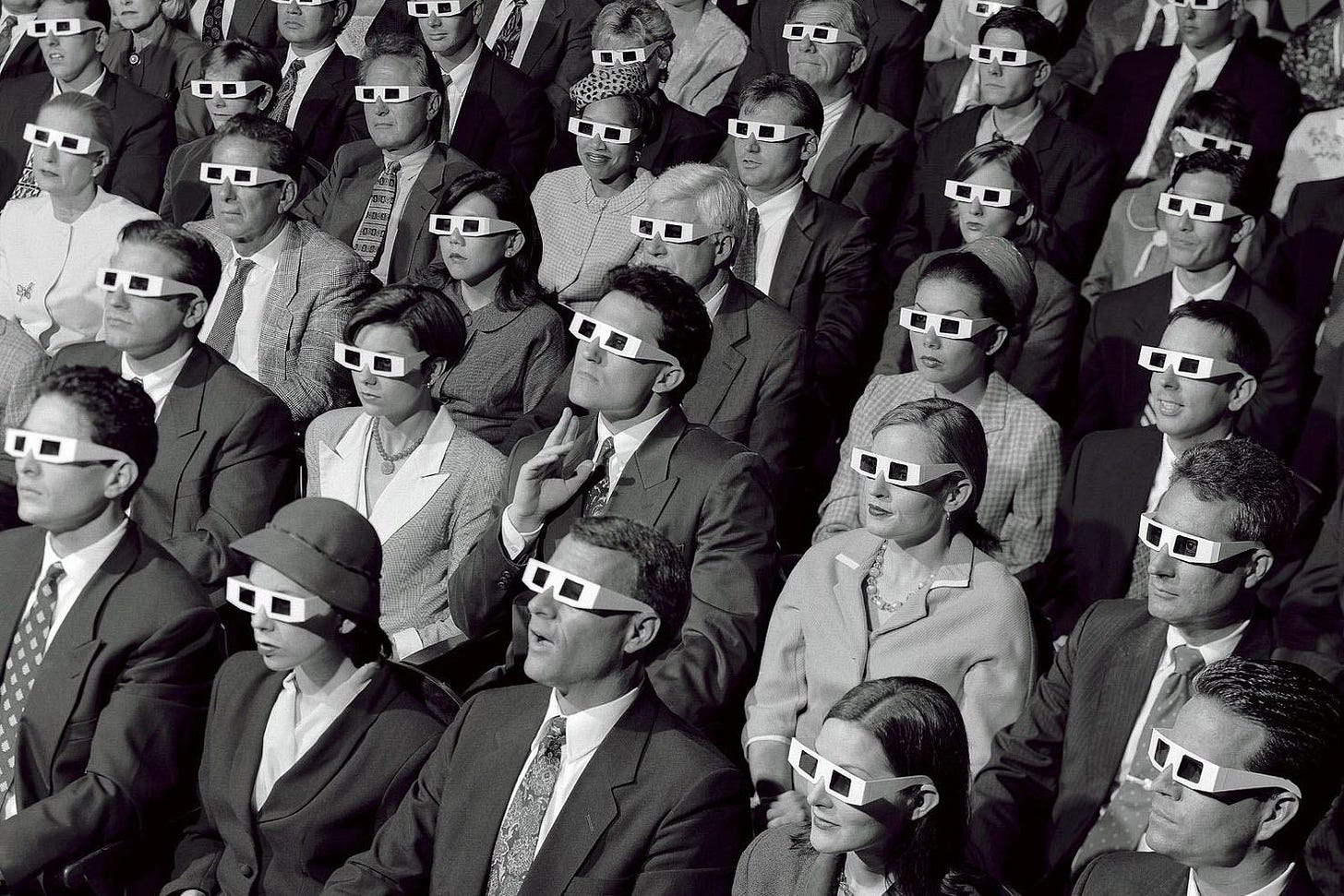Guy Debord is Dead
The Spectacle Continues
Alexander Dugin recalls the legacy of Guy Debord, one of the last great European non-conformists and the unmasker of the “society of the spectacle,” whose radical critique of modern mass culture, although co-opted by the very System he attacked, might still inspire revolutionary action anew.
On 30 November 1994, at the age of 62, Guy Debord committed suicide. His name has long been a myth. The Situationist International (established by him at a conference in Cosio di Arroscia on 27 July 1957 and over which he presided for many years) has gone down in history as one of the most radical political orientations ever known. Crowds both feared and worshiped him. He was one of the authors of and main inspirations for the unsuccessful European revolutions of 1968. He died from a lack of escape and an awareness of the total defeat suffered by non-conformism in the West, accompanied by the total triumph of the System.
Charlie Chaplin Unmasked
In the happy epoch of the early 1950s, when the avant-gardist Michel Murr, disguised as a Dominican monk, gave a lengthy, super-radical Nietzschean sermon during Easter week at the Notre Dame cathedral, when the ‘Atelier of Experimental Art,’ in exhibiting the works of a certain ‘Congo’ and having received positive reviews from avant-garde critics, declared that the artist had in fact been a chimpanzee, a young genius by the name of Guy Debord made his explosive entrance into the non-conformist universe; he was deep, radical, and ruthless. He bested all with his energy, courage, and talent, as well as with his ability to drink great amounts of alcohol. As Debord himself would later write, “All I ever did in life was read and drink. I might have read a lot, but I drank far more. I wrote less than other people concerned with writing, but I drank more than those who concerned themselves with drink.”
Debord’s first scandalous act was a ferocious attack launched against Charlie Chaplin on the occasion of the latter’s arrival to Europe in 1952 . Debord dubbed this snot-nosed comic of humanism “the swindler of feelings and the blackmailer of suffering.” His thrown gauntlet was punctuated with the words: “Go home, Mister Chaplin!” In this occurrence, we can already see the basic trajectory of the future situationist — a hatred of the bourgeois surrogates of mass culture, especially when they are marked by a false progressivism and a Pharisee humanism. Debord’s position can be essentially reduced to a struggle against the right and an unmasking of the left. In other words, he wanted radical revolt against the System and its cunning totalitarianism, masked as ‘democracy.’ It only makes sense that more committed leftists denounced Debord, fearing his lack of compromise and overwhelming consequence. Eventually, Debord himself would formulate his irreplicable criticism of the ‘avant-garde’:
“At early stages, one of the characteristic traits of the developed bourgeoisie is a recognition of the principle of freedom for intellectual or artistic works. The next stage constitutes a struggle with these works. Finally, the bourgeoisie adapts these works to its own interests. The bourgeoisie has no choice but to support a critical feeling within a small group of people — a spirit of free inquiry—but only on the condition that these efforts will be concentrated into a narrowly limited sphere and that these criticisms will be diligently compartmented from society as a whole [...]. The people who have distinguished themselves in the sphere of non-conformism are accepted as individuals by the System, but only at the cost of disavowing any global application of their ideas and with the agreement that their activity will be strictly limited to the most fragmentary social niches. It is precisely for this reason that the term ‘avant-garde,’ which so lends itself to bourgeois manipulation, should in itself raise suspicion and laughter.”
Revolt against the Society of the Spectacle
Guy Debord’s primary work, which has now become a modern classic, is his Society of the Spectacle. In this book, he mercilessly condemns modernity, the ‘epoch of lonely crowds.’
“Just as leisure is defined by the fact that it is not work, the spectacle is defined by the fact that it is not life.”
The modern world, as a consequence, is reduced to isolation, representation, and death. Instead of any unifying life experience, it is the laws of the image which reign supreme, flickering pictures which merely represent reality. Debord, building off of Fromm, observes that the social degradation of the liberal System has spent a considerably long time in its final stages. At first, ‘to be’ was changed into ‘to have.’ And by now, even ‘to have’ has disappeared, transformed into ‘to appear.’
At first, the bourgeois world subordinated nature to its industrial laws; then, it subordinated culture to itself. The spectacle has annihilated history. “The end of history provides a sigh of relief to all existing authorities.”
Having suppressed in man and society a taste for the real, replacing states and experience with ‘representations,’ the System has worked out the newest method of exploitation and enslavement. Before, it had separated people into classes, then it used force to drive people into the factories and jails, and now it has shackled them to their television sets. In doing so, it has once and for all won a victory over Life.
“The relentless accumulation of images gives the viewer the impression that everything is permitted, but simultaneously impresses him with an assurance that nothing is possible. You can look, but you can’t touch. The modern world becomes a museum, where the very passivity of its visitors becomes its chief security guard.”
To define the essence of the society of the spectacle in such a way is nothing short of genius. Was it not an epiphany, a clear gaze into the depths of this terrible truth, which drove revolting Russians in October 1993 to attempt such a hopeless storming of the Ostankino Tower, that highest symbol of the System’s absolute lie?1 Perhaps in that moment, those participating in the uprising intuitively manifested the testaments of Debord:
“One should seek the formula for ‘détournement [rerouting/hijacking]’ not in books, but in concrete experience. One must diverge from the prescribed trajectory in broad daylight so that nothing reminds one of wakefulness. Striking encounters, unexpected obstacles, grandiose betrayals, risky enchantments — these will more than suffice for this revolutionary, tragic search for the Grail of Revolution, which no one asked for.”
A New March on the Ostankino Tower
After the collapse of the 1968 revolution, Guy Debord paid far less attention to his International and, in 1972, it dissolved on its own. From time to time, Debord would still publish articles and shoot the occasional film, but the bitterness he had imbibed as a result of his defeat was too deep . Even his uncompromising criticisms had been swallowed effortlessly by the System; his main work had become a canonized classic to which everyone made reference, while few took the time to read it. The expression ‘Society of Spectacle,’ which had been so loaded and terrible in the mouth of Guy Debord himself, had become a commonplace in the political lexicon, having lost its revolutionary, non-conformist, unmasking charge.
Debord was then marginalized, isolated, and ‘recuperated.’ The Situationists vanished, and only a handful of ‘anarchists from the right’ and European followers of Evola (in particular, Philippe Baillet) made an admittedly unsuccessful attempt to reinstate a certain relevancy to his ideas. But the West continued further down the path of spectacle, more so than we could even imagine.
Never before has death ruled the world so absolutely and with such horrifying obviousness as it does today in the liberal world. Guy Debord’s suicide is the final flourish written in the blood of a living person at the command of the Society of the Spectacle. It may be that he was the last person remaining in the West who could end himself since no one there possesses an authentic ‘I’ anymore.
Chirac’s election as the president of France, the success of ‘Proctor and Gamble,’ Madonna’s final tour, Henri Bernard-Levi’s work on a new advertisement text for the bourgeois Yves Saint Laurent, the hollow cyborg smile of Naomi Campbell, democratically confected in a test tube filled with sperm from representatives of all four human races... Even more time has passed since the unnoticed death of the great Witness...
The Beast hefts its television body, crawling morosely toward the oblivious, agonized, faltering East.
But all the same... All the same, we must rise again and again and march on Ostankino Tower. Both the living and the dead. Together with Guy Debord. This malevolent television tower is the phallus of Satan, constantly birthing the poisonous hypnosis of the ‘Society of the Spectacle.’ Having detonated it, we will castrate the very demon of violence which hides behind the decrepit masks of the System’s marionettes.
Sooner or later, the endless spectacle will come to an end . Only then will we have our revenge, and it will be merciless.
READ MORE: The above text is an excerpt from Alexander Dugin’s Templars of the Proletariat, brought to you in English by Arktos:
[Ostankino Tower, the tallest free-standing structure in Europe, is a television and radio broadcasting tower in Moscow.]








see thru it!
the spectacle is a conceptual overlay,
which is at odds with phenomenal reality
hence schizophrenia normalcy
'everything we are taught is a lie'
rimbaud
The truly depressing aspect of this, aside from Debord's suicide, is the way the System absorbs even criticism. How is this possible? Is it a process? A formula? A method?
That aspect fascinates me. How even hard criticism of the type published by Debord can become useful to the regime. Is it neutered by absorption?
One tame example is how the TV programme Big Brother circumvents the horror of Orwell's world and his use of the term and reimagines it as mildly invasive surveillance for entertainment purposes, all of it consented to by the participants. This to me neuters the term forever; it can never quite regain the sinister element understood by Orwell. Perhaps this is a similar thing to the capture of Debord's ideas in The Society of the Spectacle.